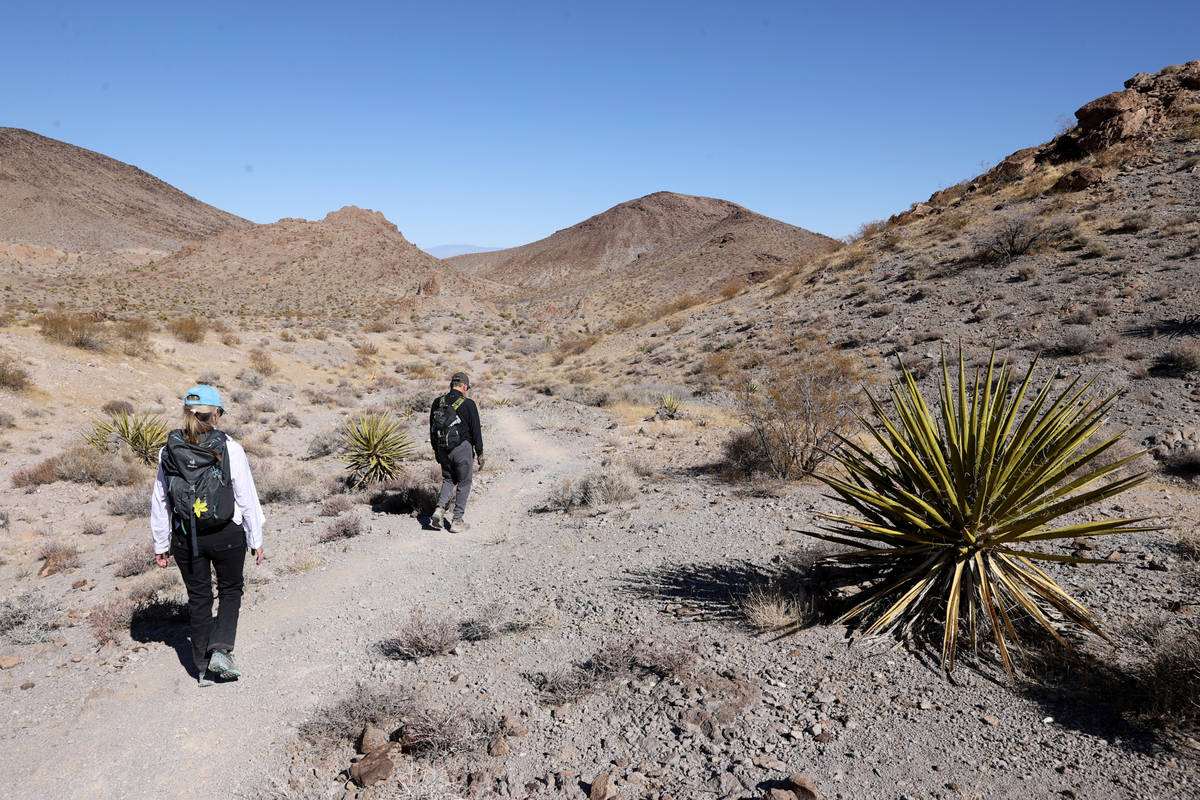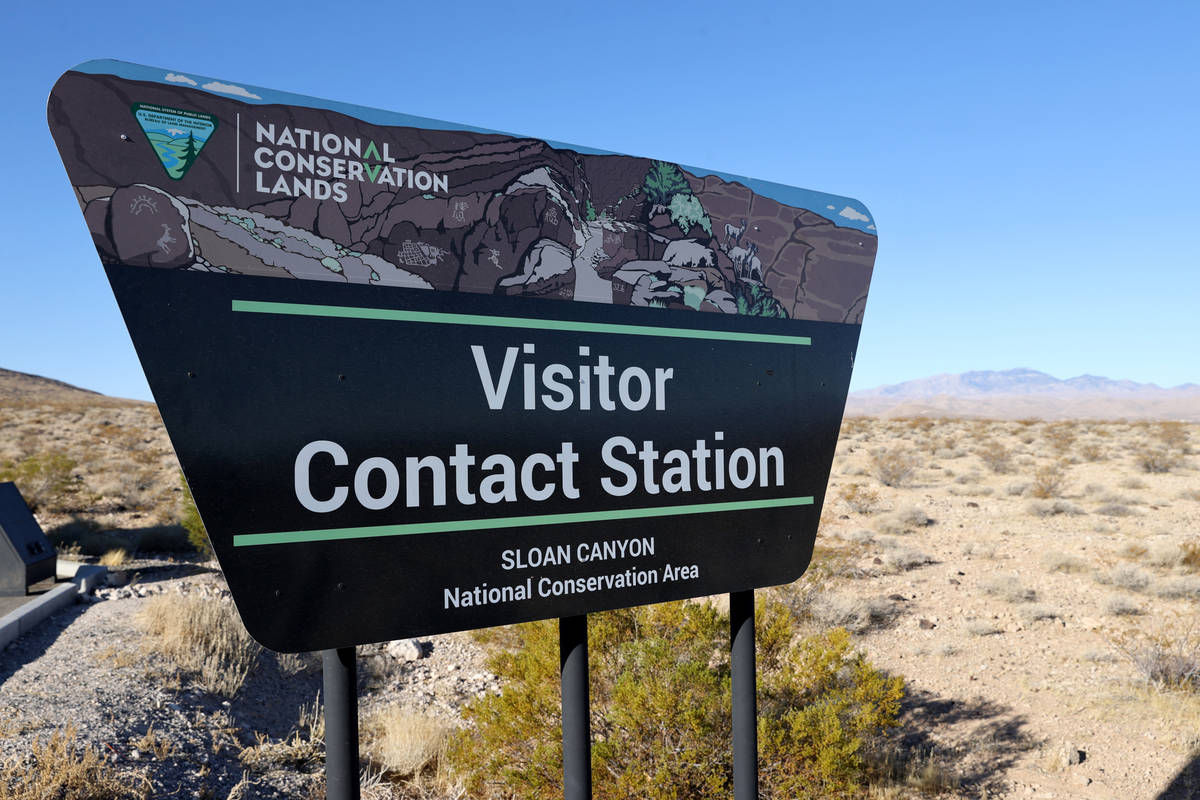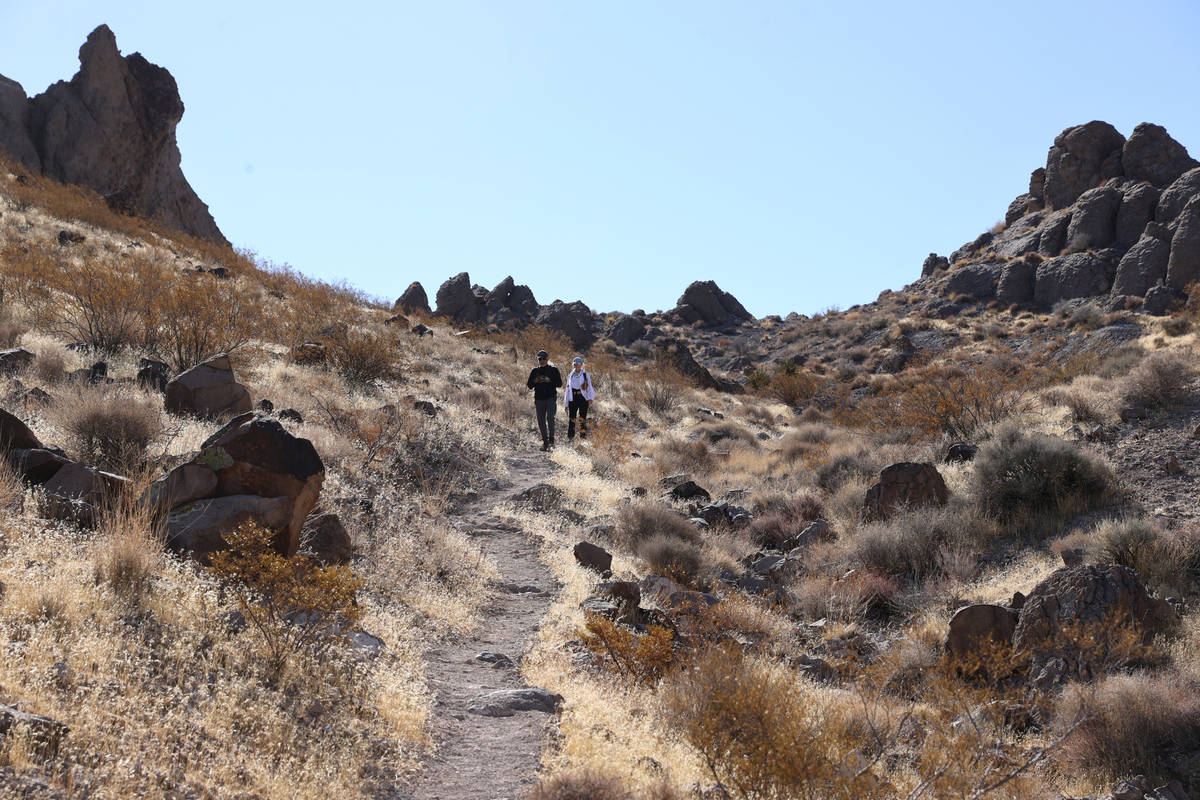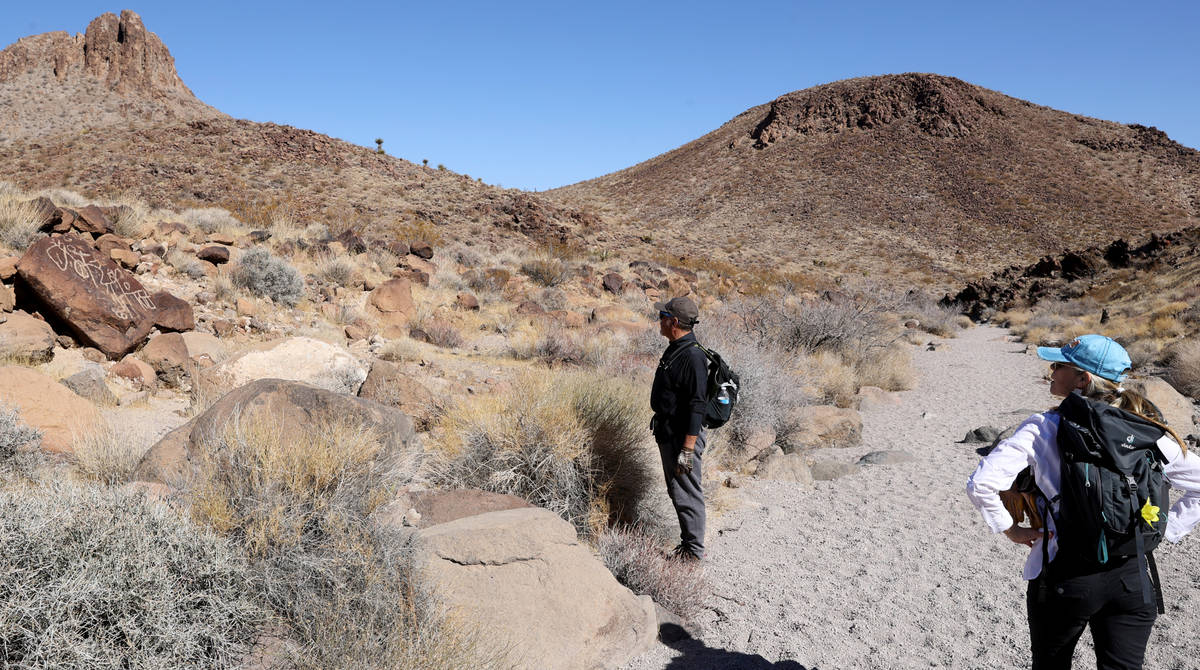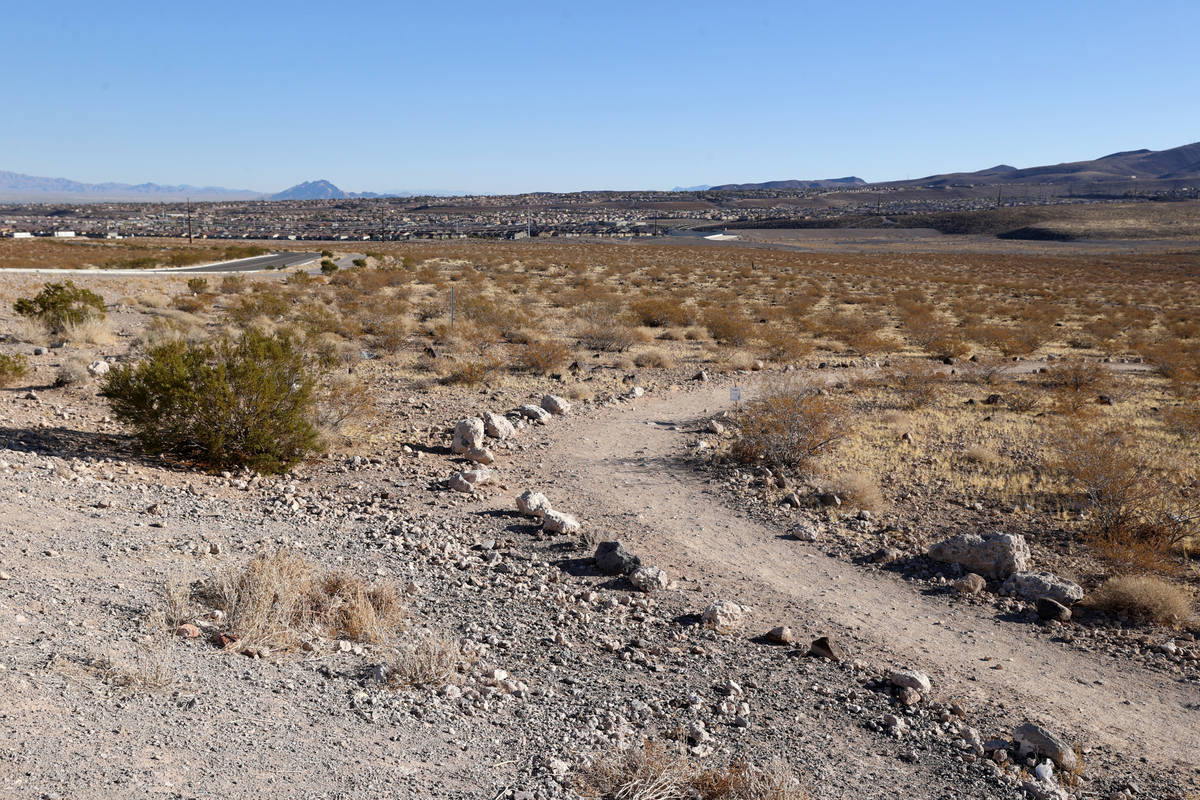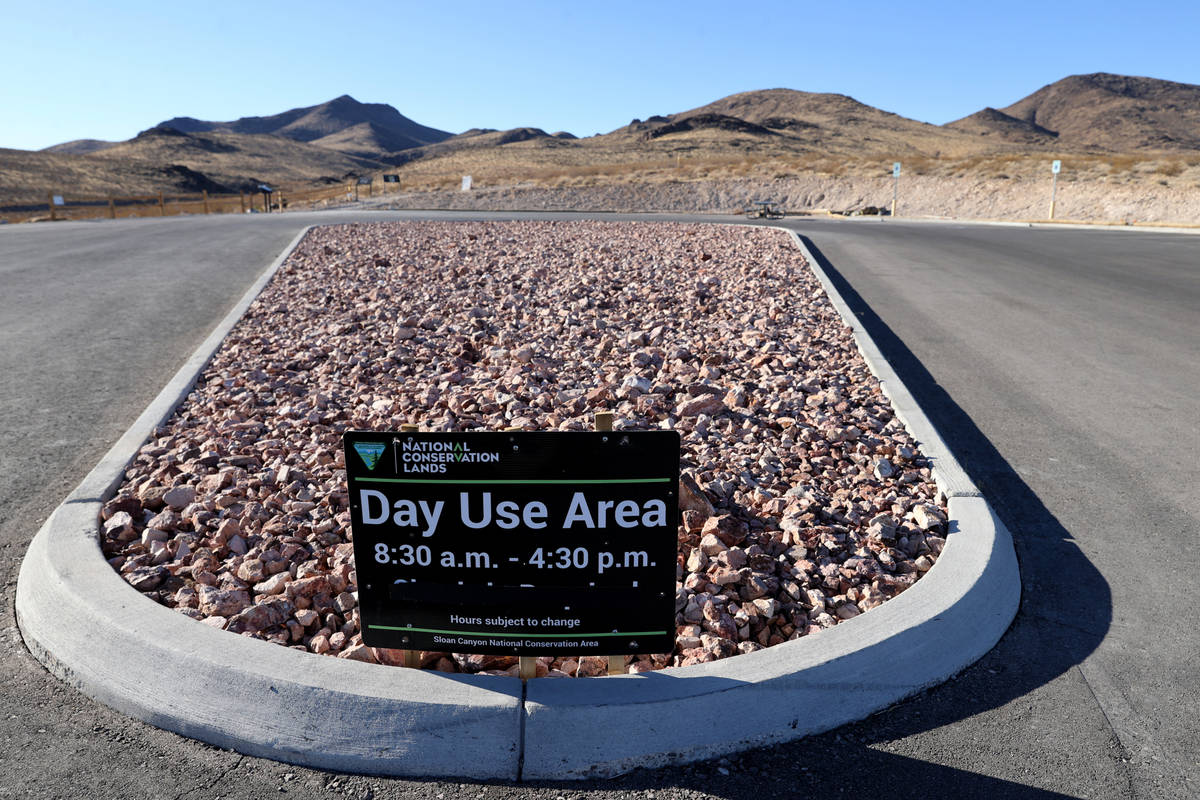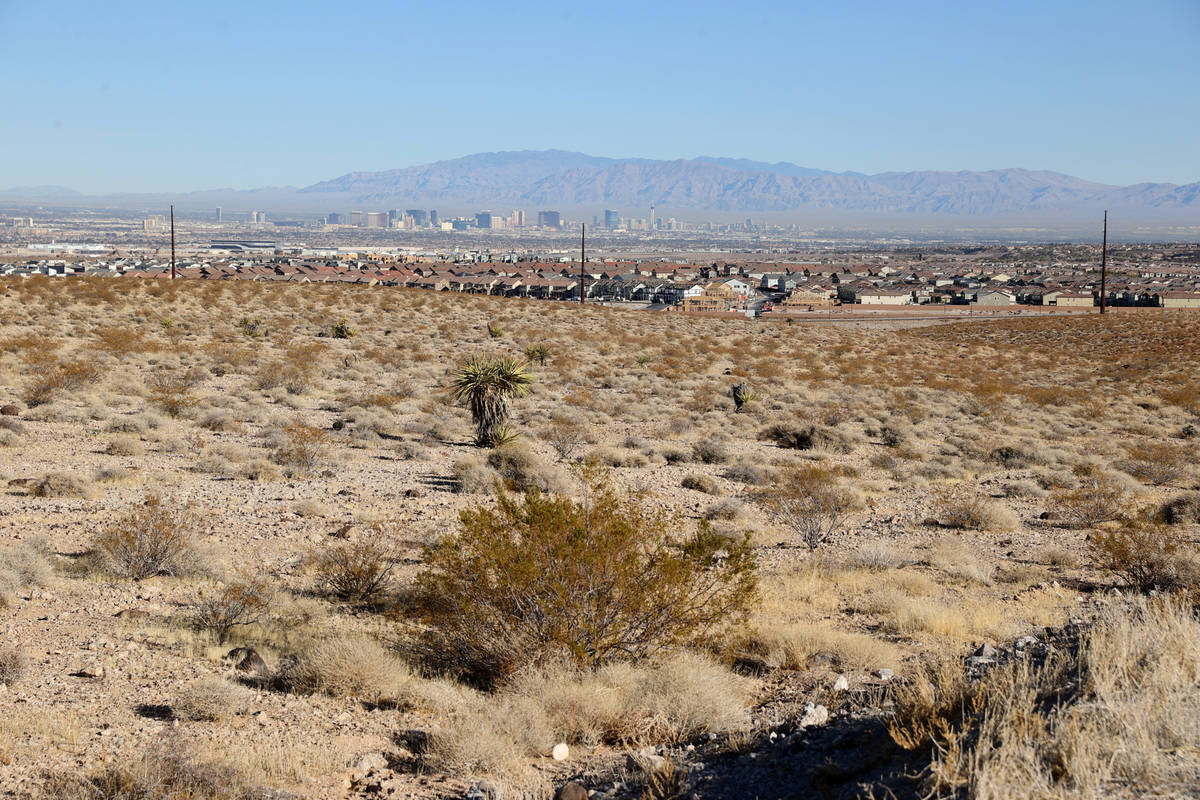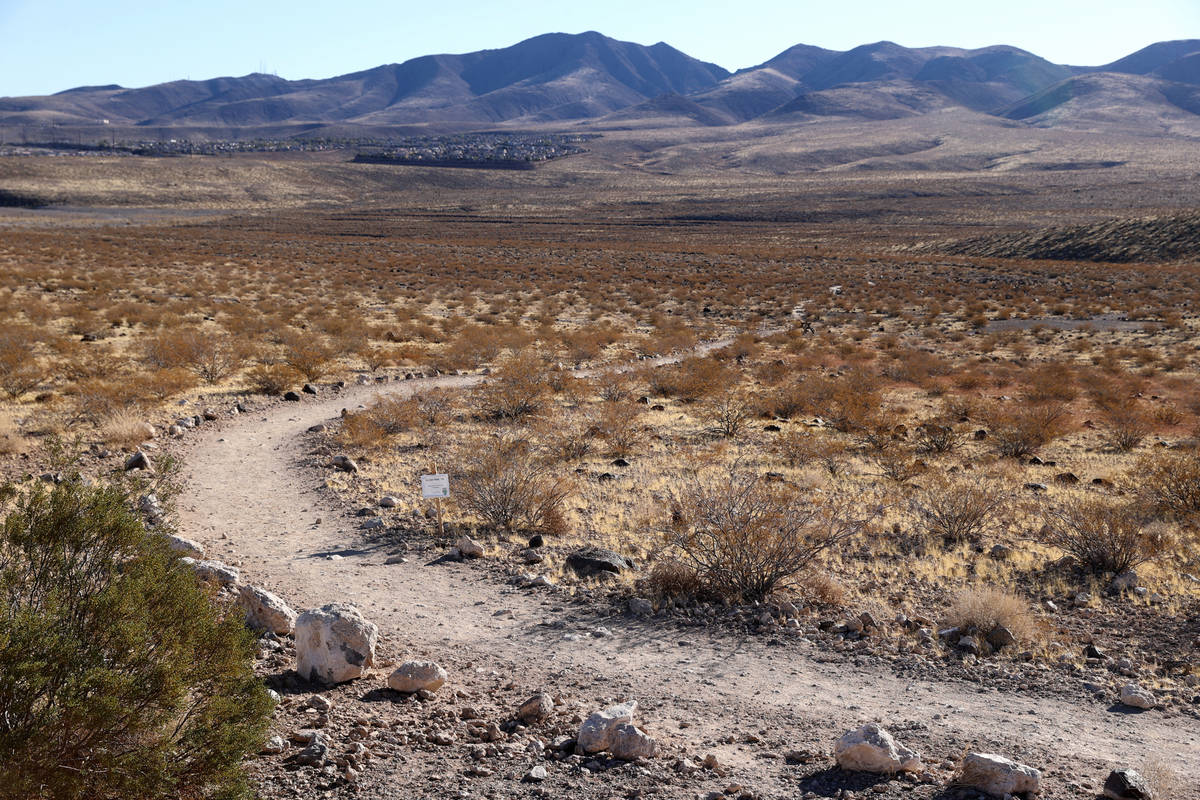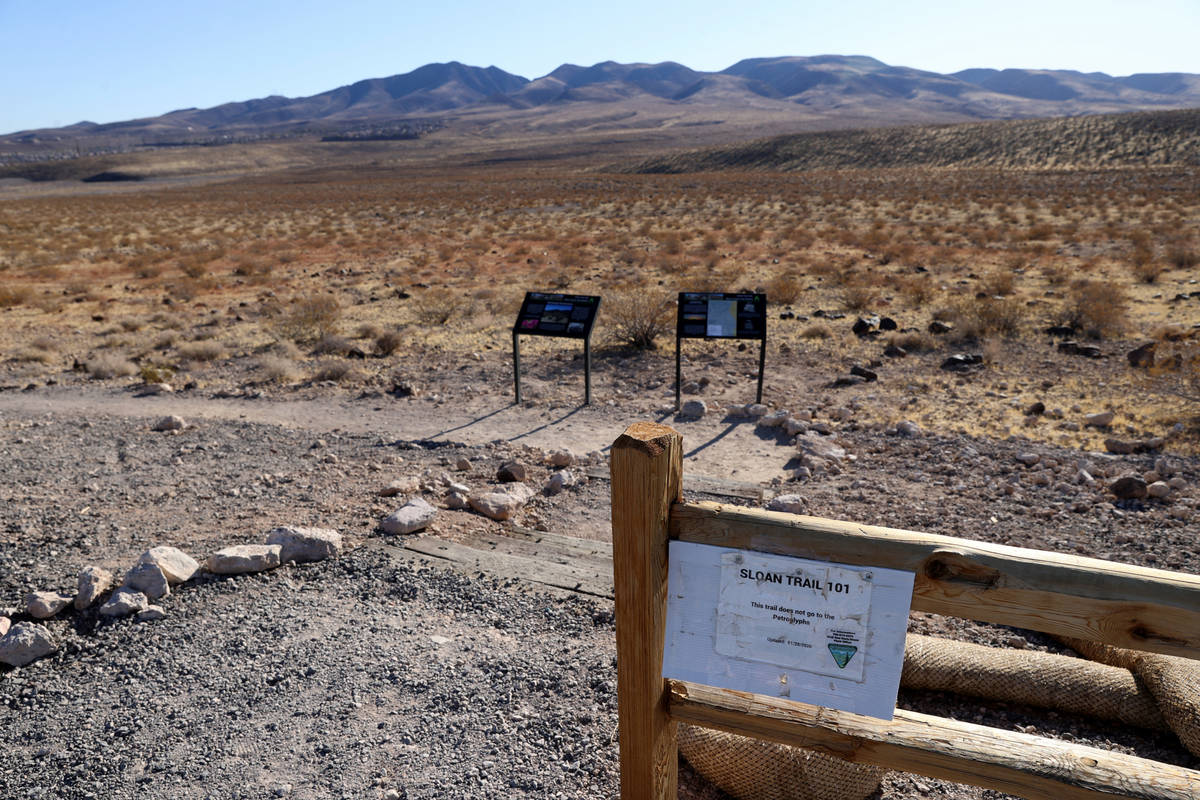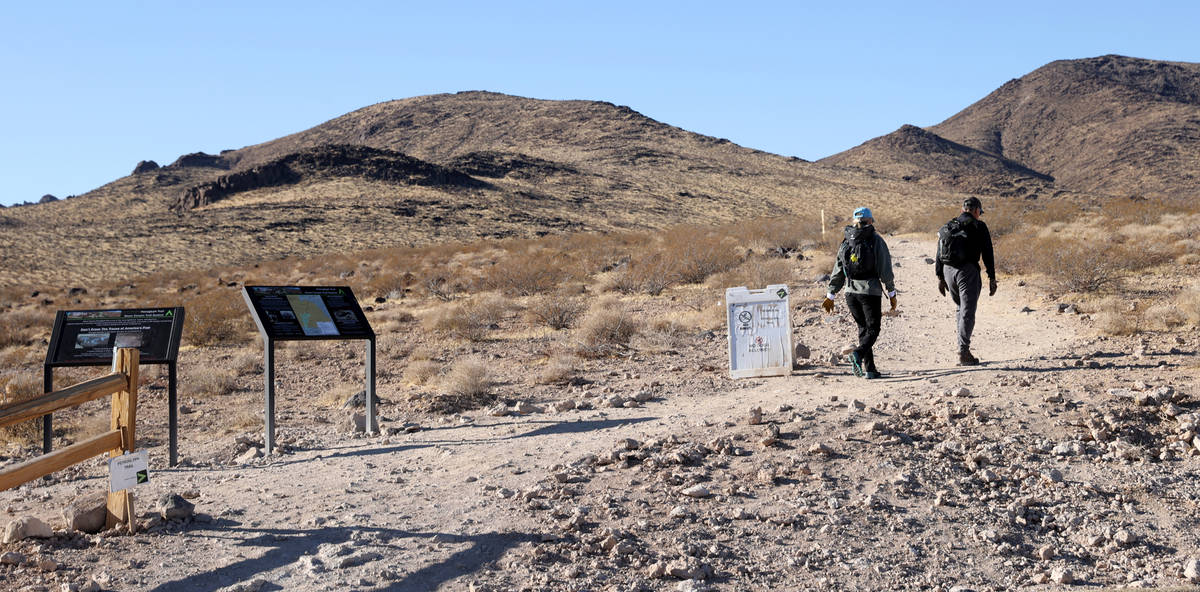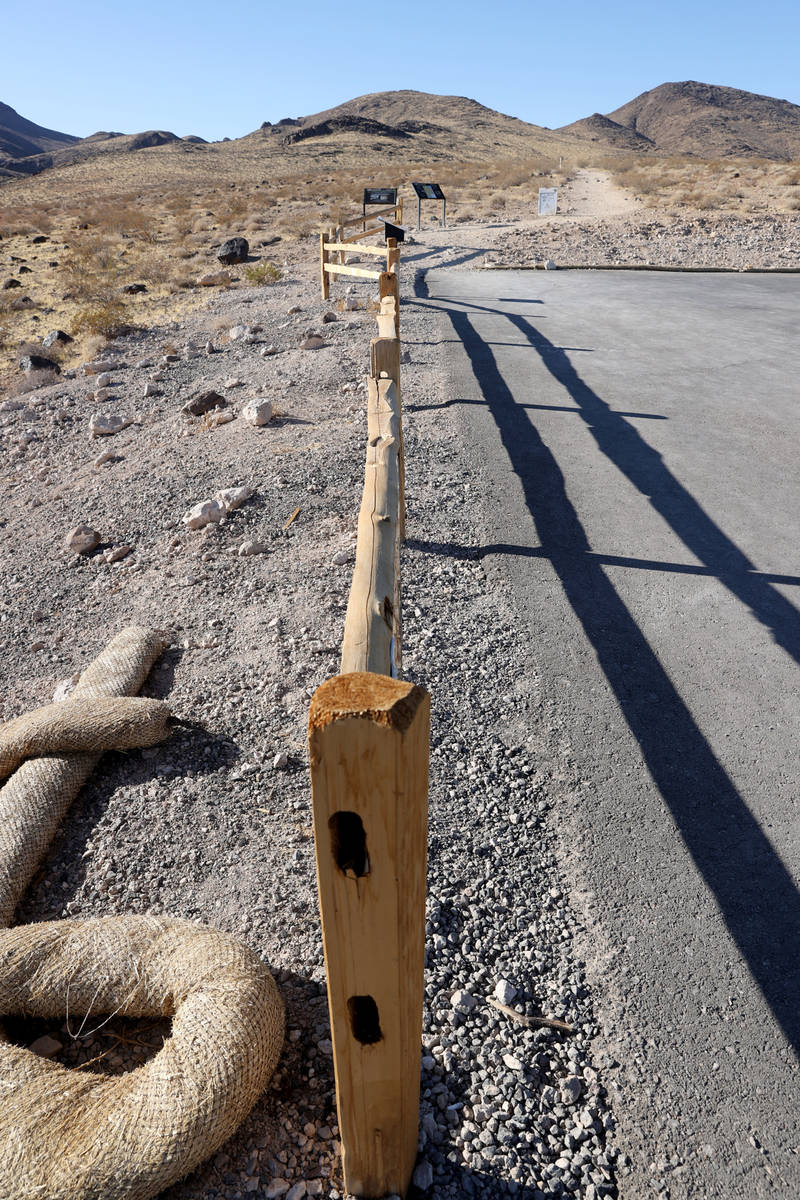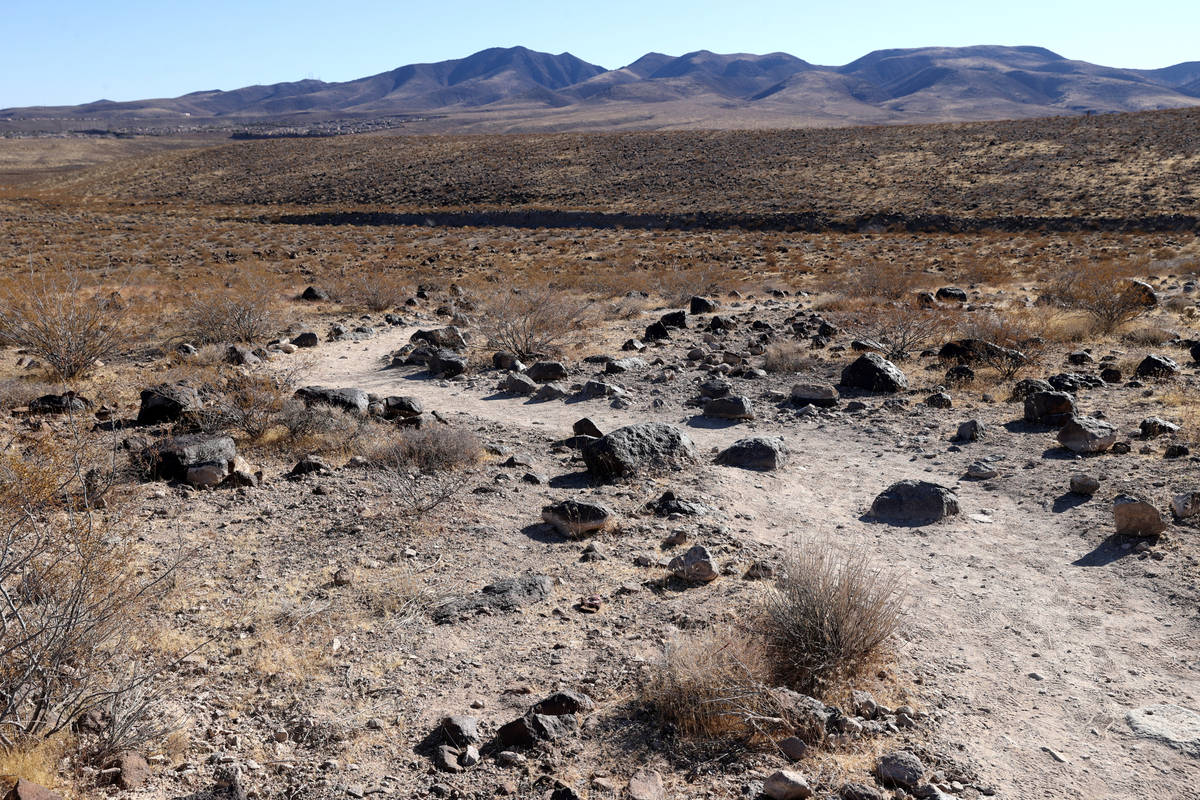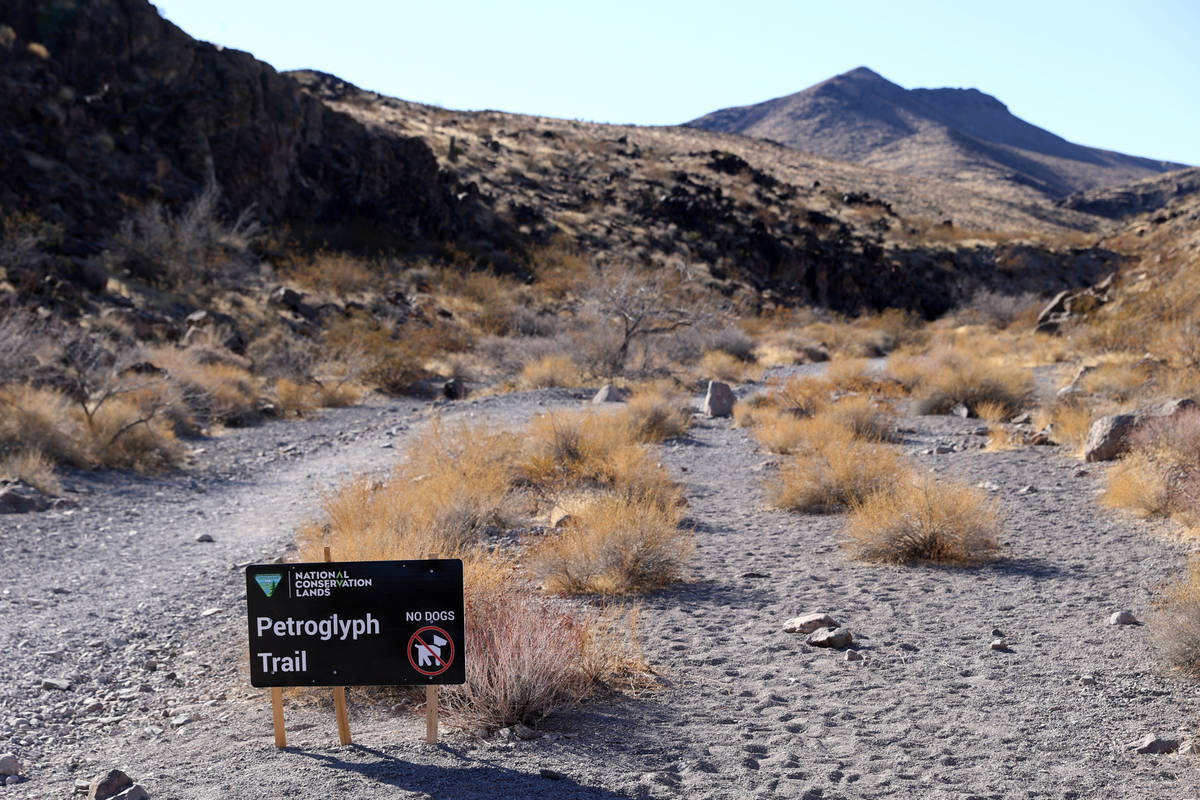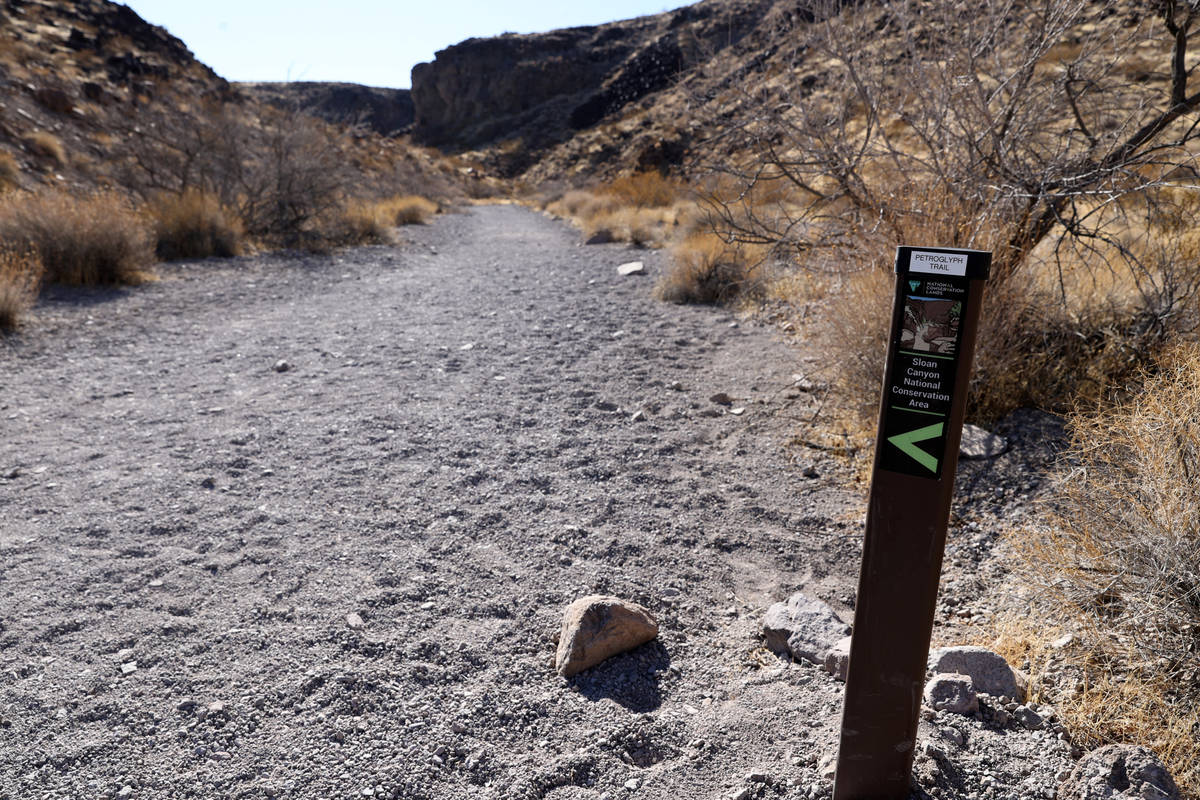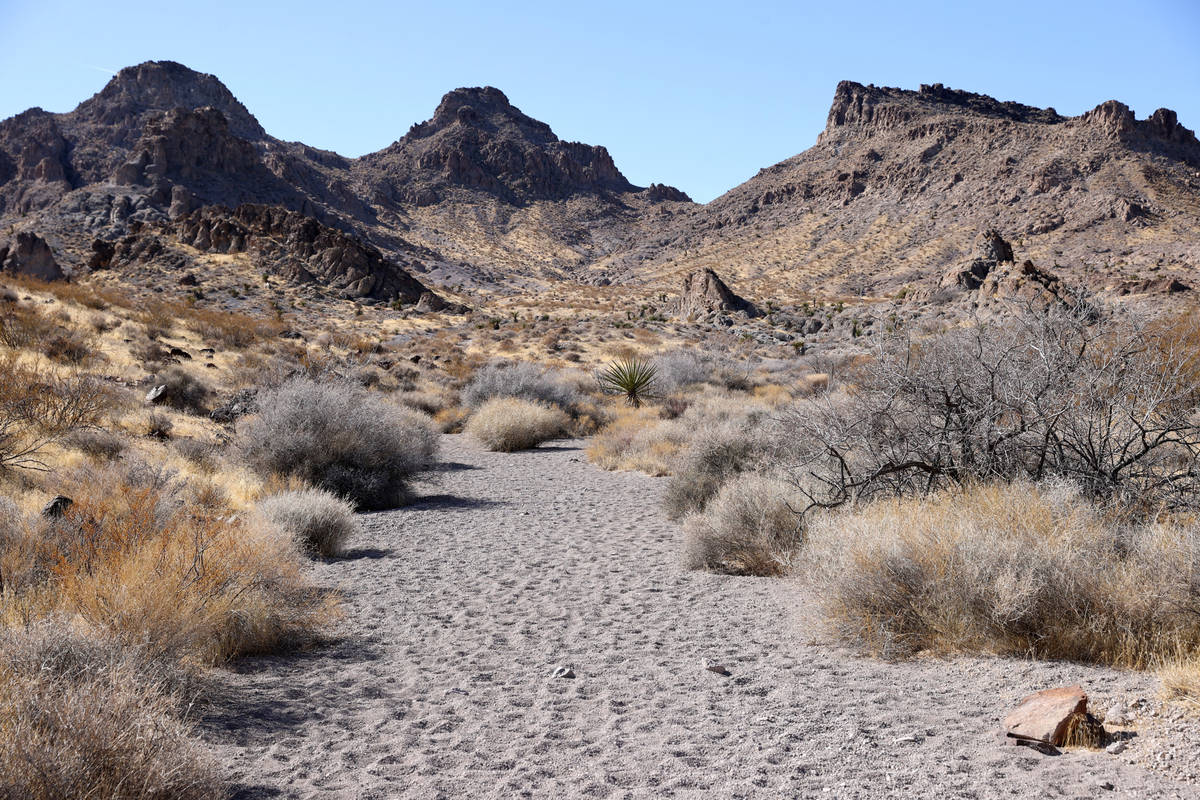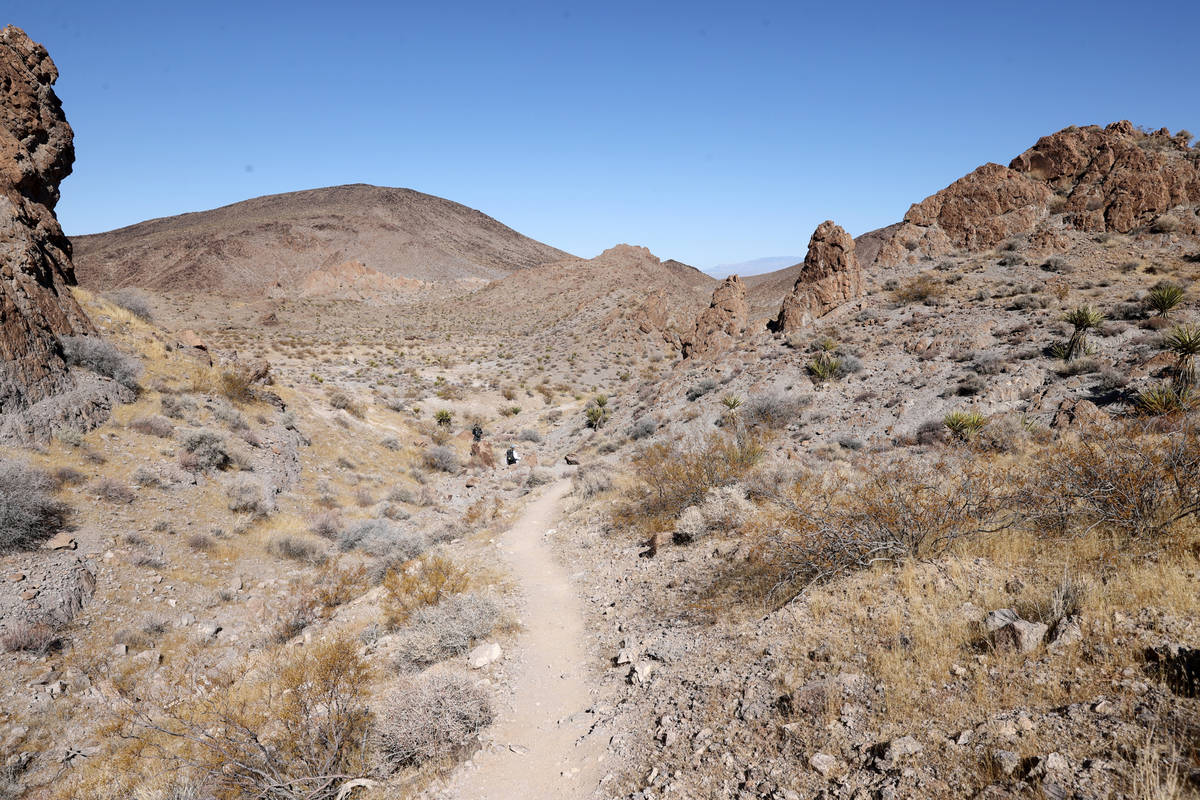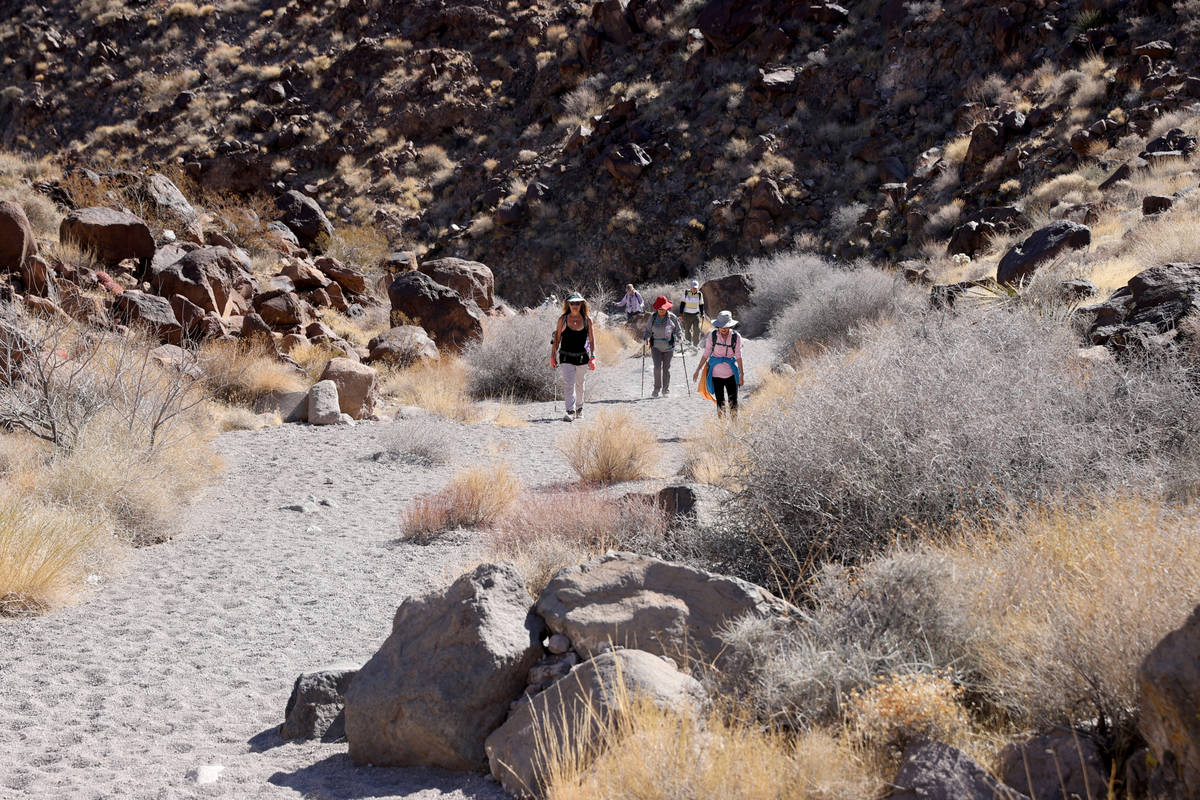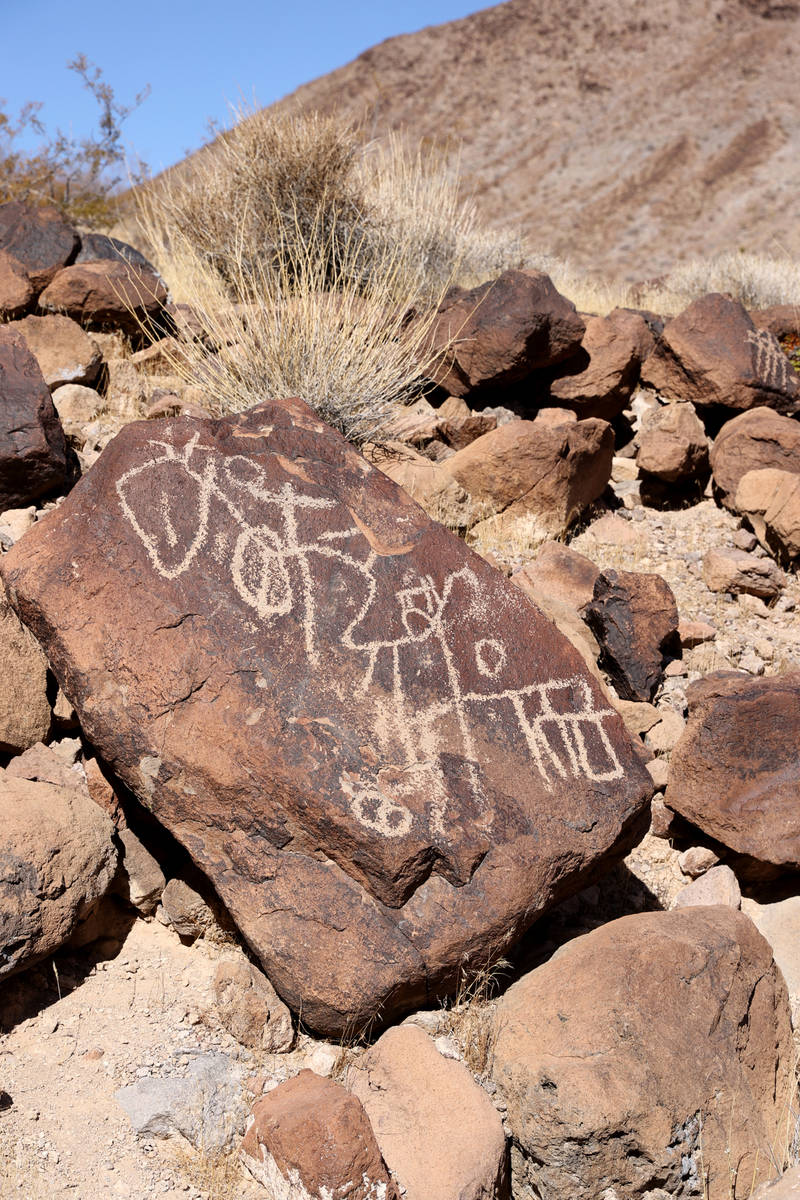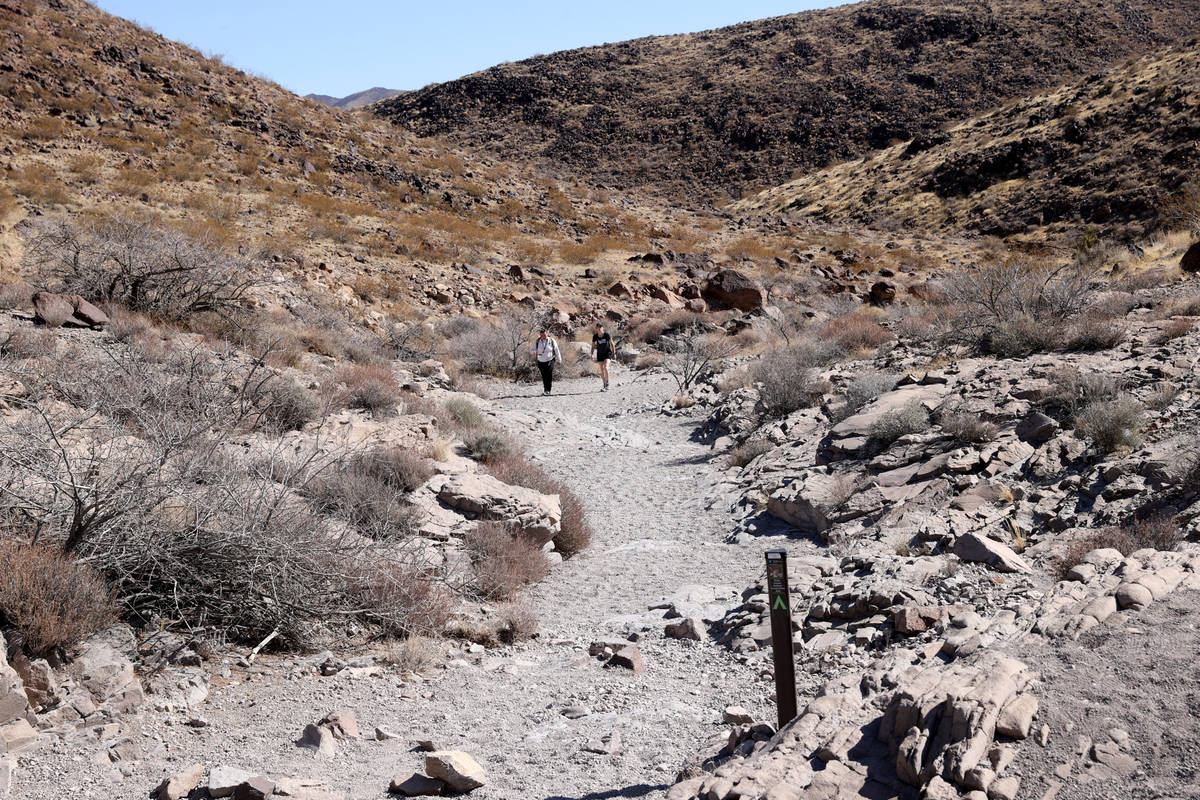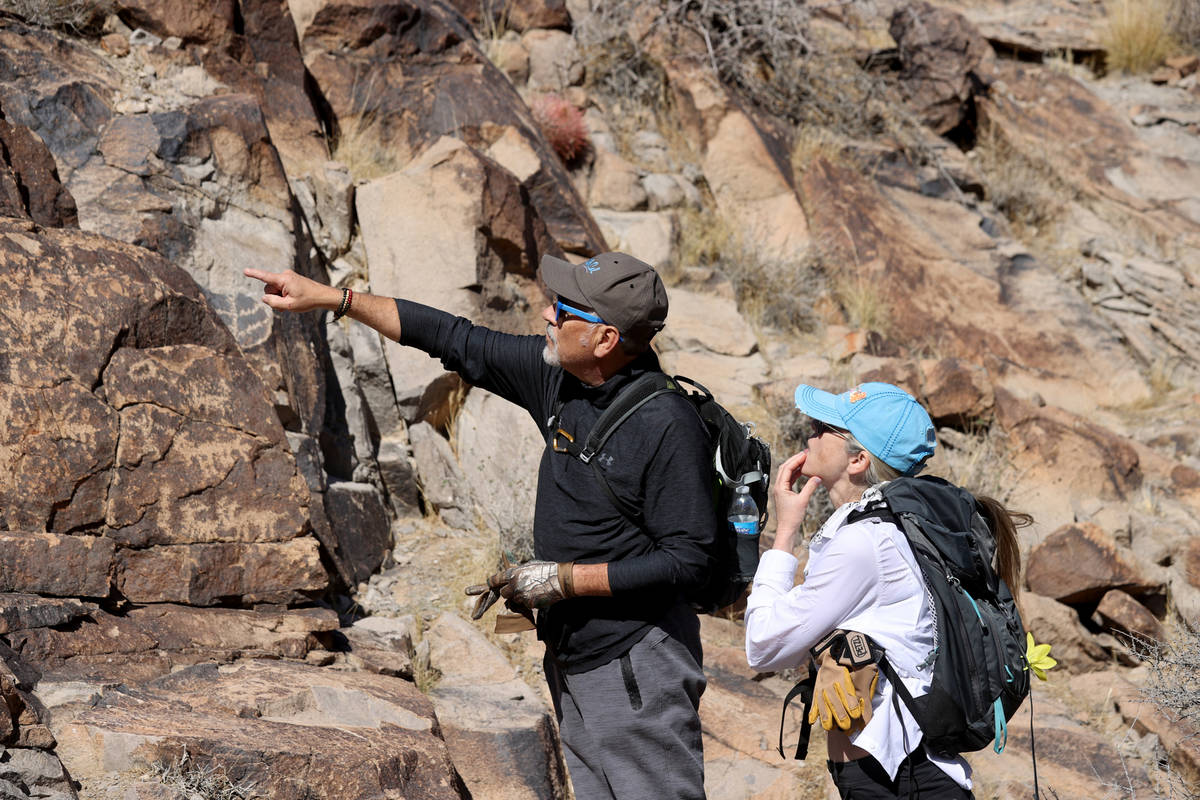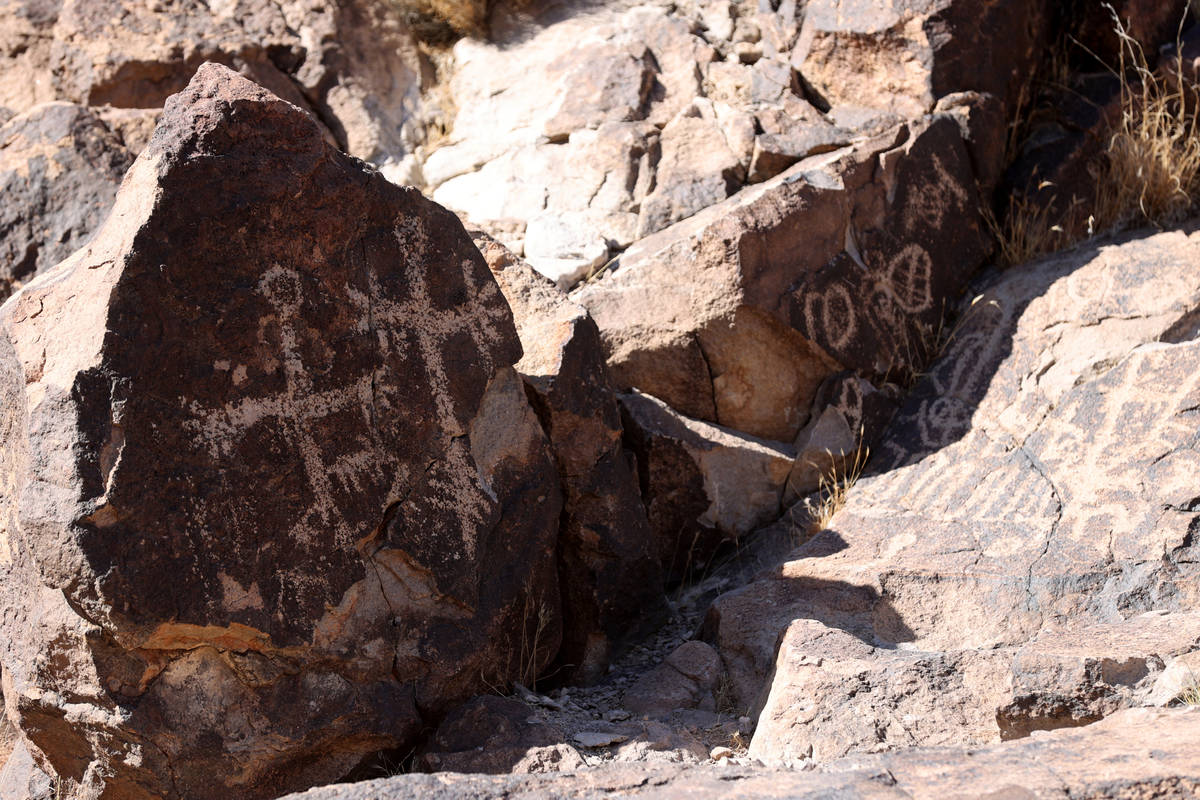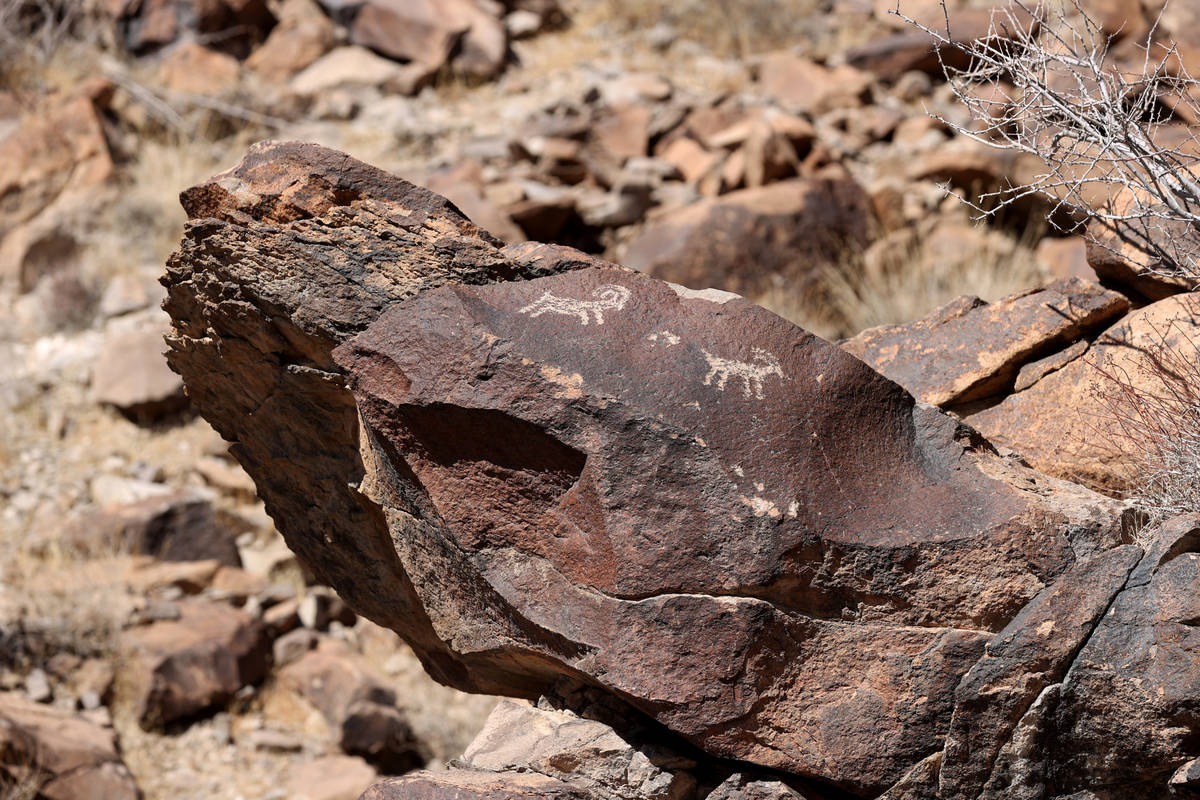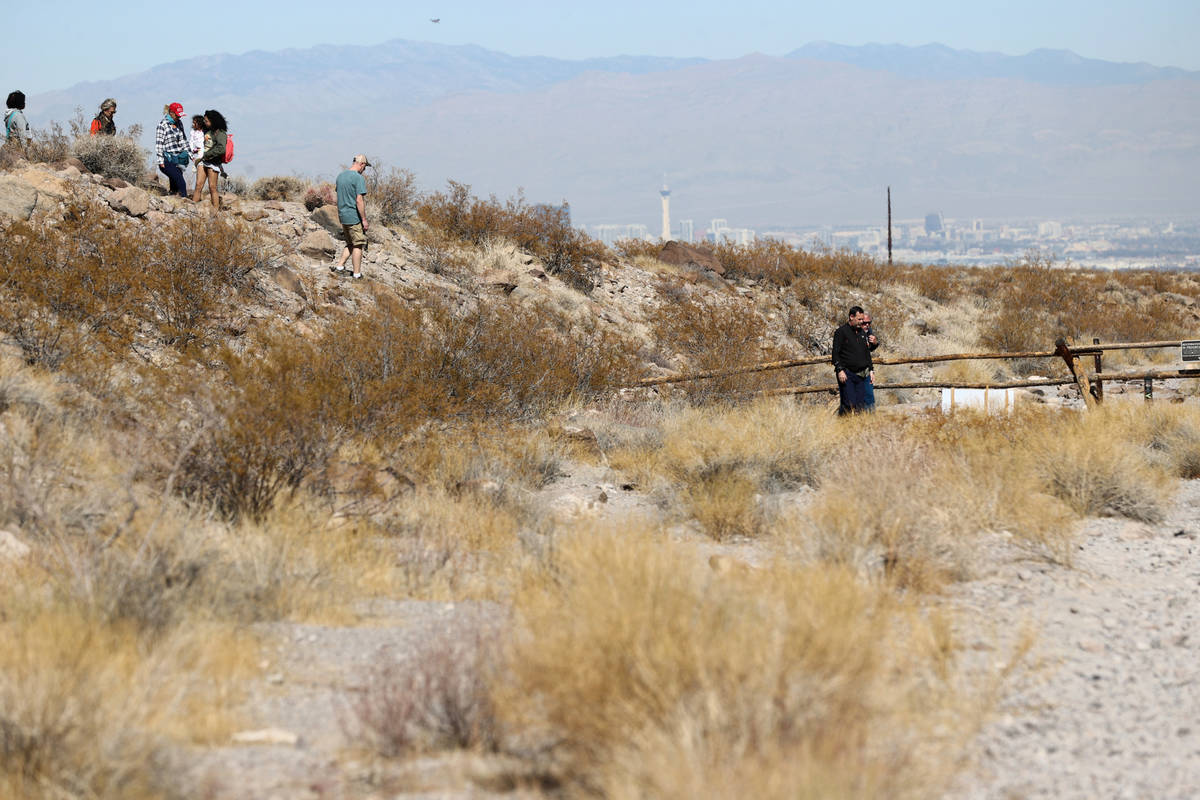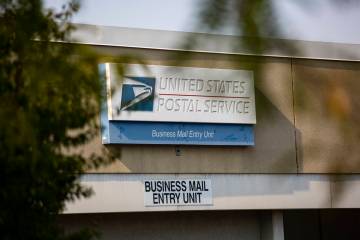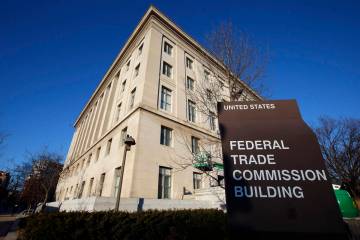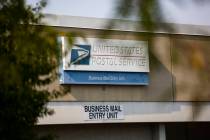Water authority wants to drill through Sloan conservation area for pipeline
A proposed water line that would quench the thirst of development in the southern Las Vegas Valley could tunnel through federally protected land.
Officials at the Southern Nevada Water Authority plan to submit an application to the Bureau of Land Management soon to start the process of approving a pipeline under Sloan Canyon National Conservation Area. Tunneling through the protected area is one of two possible routes being considered for the pipeline.
The project is part of an effort to increase the reliability and capacity of the water system in the southern valley while also creating backup infrastructure to an existing water line.
But what exactly that means for the environment remains unclear to conservationists. The water authority claims that the protected area’s surface would be unaffected.
“I think as an environmental group, we’re pretty hesitant to have someone blasting a pipeline through a national conservation area,” said Patrick Donnelly, Nevada director of the Center for Biological Diversity. “But also, (we) just want to understand what the impacts are, because I don’t think that’s been really fleshed out yet.”
Designated by Congress in 2002, the conservation area spans more than 48,000 acres.
If built, the massive pipeline would have a diameter of up to 10 feet and could carry 375 million gallons of water per day to the southern valley. The existing line, which serves 40 percent of the valley, is expected to reach 95 percent capacity in 2034.
The project, known as the Horizon Lateral, could service development outside of the Las Vegas Valley, such as a proposed airport in the Ivanpah Valley, a water authority spokesman said.
The water authority’s board voted last year to include the pipeline in its long-term projects plan, but officials did not present the proposed routes during public meetings for either the board of directors or for an advisory committee because a feasibility study had not been completed, according to the agency.
However, proposed routes for the project did appear in a presentation to the Henderson City Council in December, more than a week after the water authority board approved its projects plan.
Possible routes
Water officials have two possible routes for the pipeline, one that cuts through developed parts of Henderson and another that would go through the national conservation area.
Project manager Adriana Ventimiglia said the water authority and officials from member agencies Henderson, North Las Vegas and the Las Vegas Valley Water District all prefer the route that goes under the conservation area.
That route scored better in a feasibility study because it would cause less disruption to businesses and homes, Ventimiglia said.
If the water authority took the northern route through Henderson, construction would affect major roads like St. Rose Parkway, she said.
“The availability of streets that we can fit in are few, and the ones that we can fit in are very developed,” she said.
Early cost projections are similar for both routes, but the southern route is expected to cost less, she said. A spokesman for the water authority said the price tag for the southern route is expected to be about $200 million less than the northern route.
Water authority board members voted last year to include nearly $1.6 billion for the project in its infrastructure and projects plan.
The water authority wants to tunnel through eight miles of the conservation area, but Ventimiglia said all above-ground infrastructure would fall outside the boundaries of the protected land.
Ventimiglia said the pipeline would carry only treated water and run 50 to 1,000 feet below the surface through solid rock.
“So there really wouldn’t be any impact to the surface of the conservation area,” she said.
Yearslong review process
Donnelly, the Center for Biological Diversity’s Nevada director, said everything has an environmental impact, but it becomes a question of scale.
It is possible tunneling won’t affect the surface of the conservation area, he said, but it will create fill material that will affect the environment outside the boundaries of the projected land.
Jim Stanger, board president for the advocacy group Friends of Sloan Canyon, said his organization isn’t against building a pipeline that would support areas like west Henderson, but it is concerned with the preferred route.
He said the route through the protected land should have never been an option.
“We’re concerned that it sets a bad precedent that organizations, institutions like SNWA, in order to save a couple bucks, feel like they can kind of use the national conservation land like that,” Stanger said.
Questions about how the project would affect the environment need to be addressed through a lengthy process that must occur before tunneling can begin.
Submitting a right-of-way application and development plan to the Bureau of Land Management would kick off a process that the water authority expects to take about three years.
In that time, officials will conduct environmental impact studies and give the public time to review and comment on the project.
The water authority does not expect the route that goes through the conservation area to require an act of Congress, agency spokesman Bronson Mack said.
“In fact, we believe that the project is consistent with the law that established the Sloan Canyon National Conservation Area,” he said. “We also think that it’s consistent with the BLM’s resource management plan for Sloan.”
After the review process is complete, and if the project can move forward, construction on the pipeline is expected to take two to three years, he said.
Contact Blake Apgar at bapgar@reviewjournal.com or 702-387-5298. Follow @blakeapgar on Twitter.



